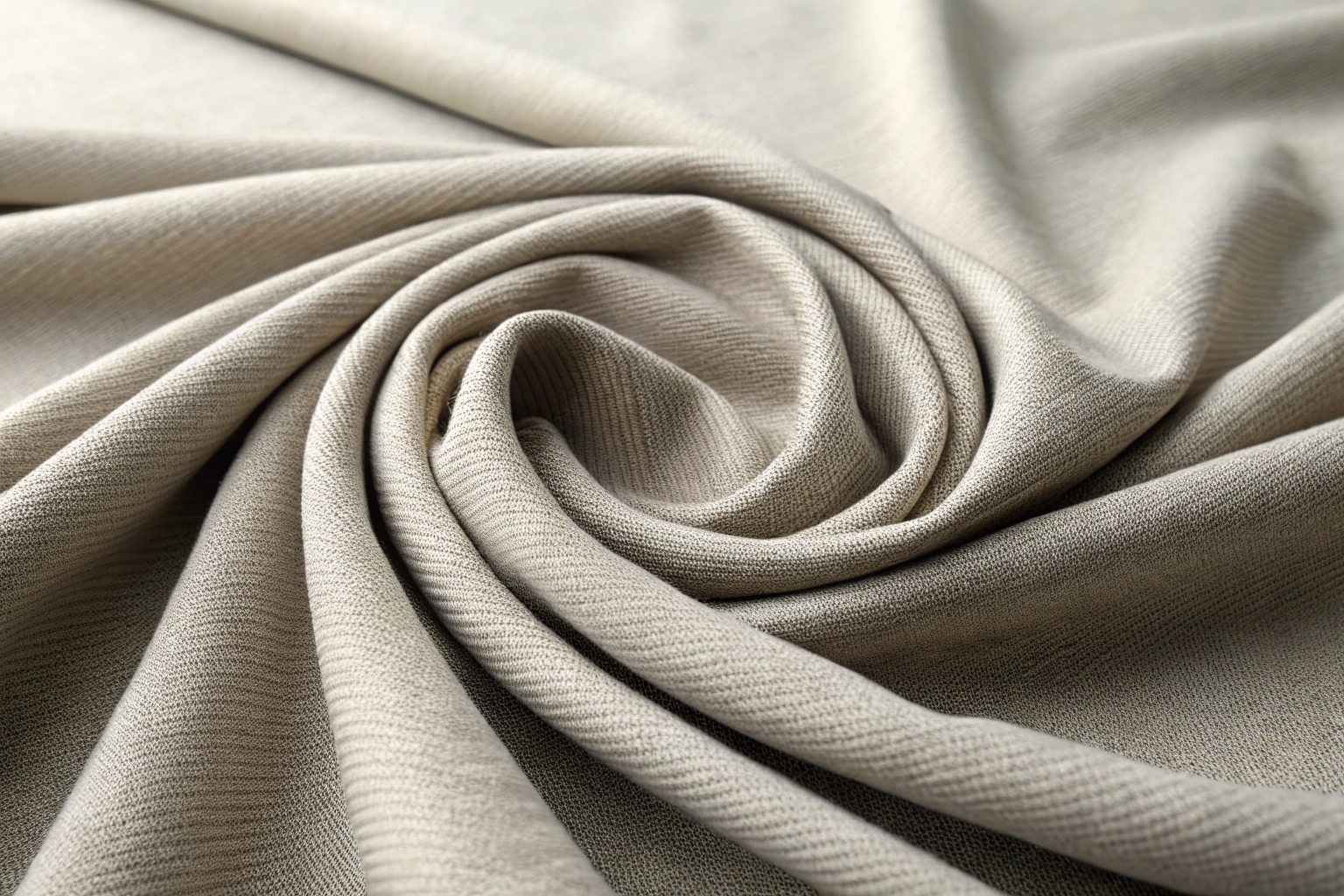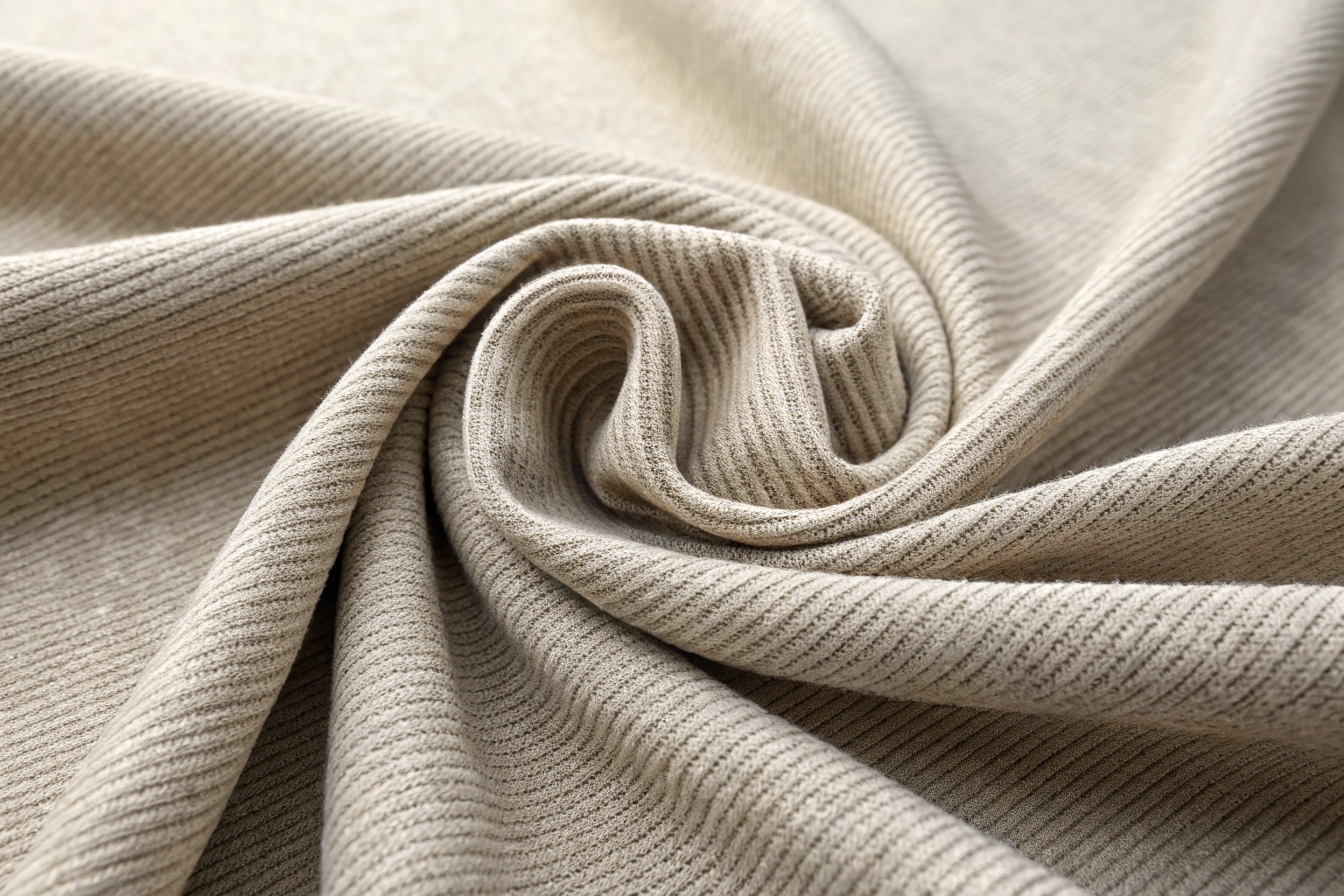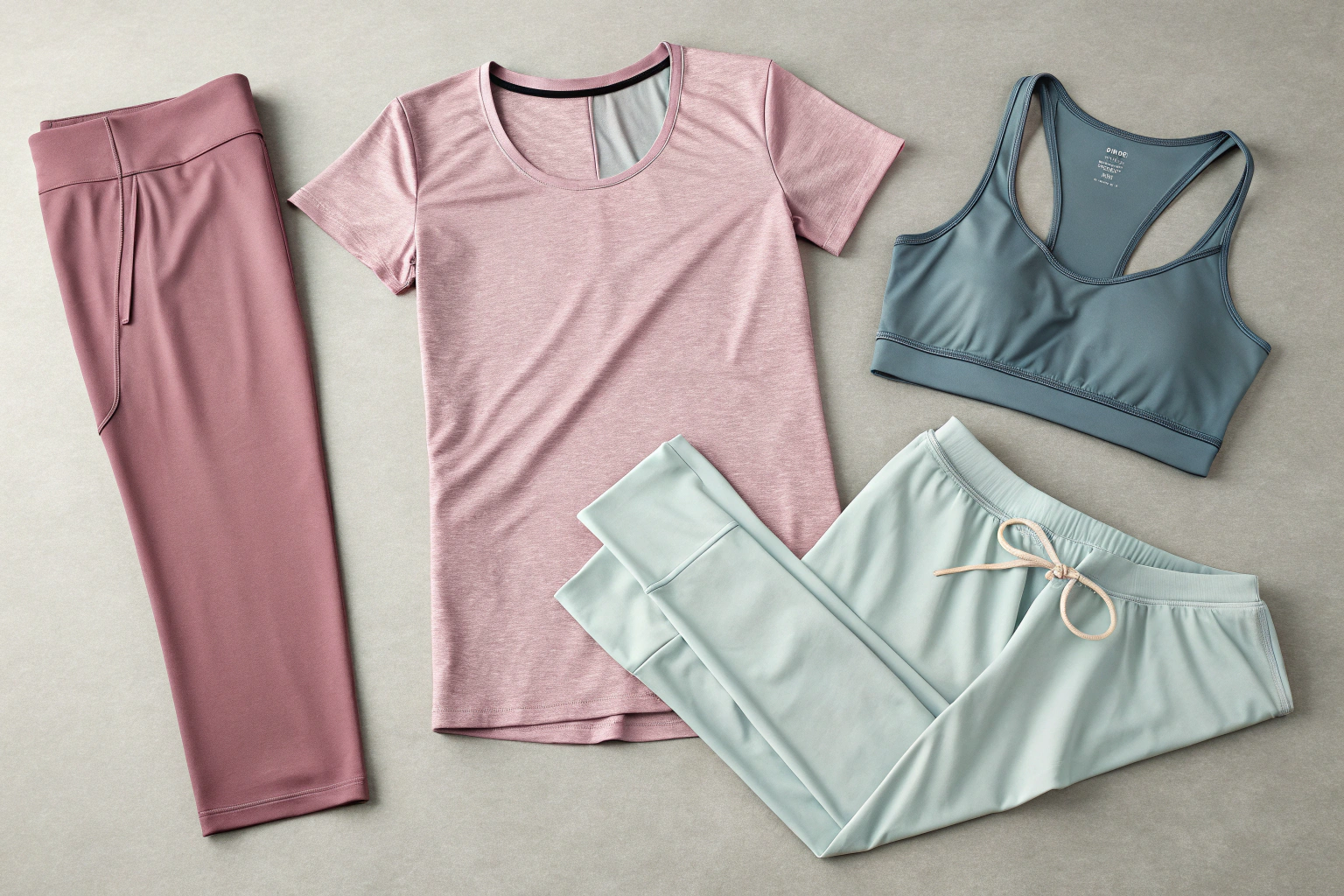Jersey fabric is a knit textile known for its elasticity, softness, and drape, commonly used in T-shirts, dresses, underwear, and sportswear.

The first time I handled jersey, I was surprised by how versatile it felt. It moved, stretched, and returned to shape. I used it for casual tees and later discovered it also worked for fitted yoga tops. The more I worked with it, the more I realized jersey is a fabric every brand should understand inside out.
What is jersey fabric?
Jersey is a knit fabric made with either natural or synthetic yarns, characterized by its stretch, softness, and one-sided texture.

Originally made from wool, modern jersey is often cotton, polyester, or viscose, sometimes with spandex for extra stretch. Unlike woven fabrics, which crisscross yarns, jersey is made with loops—giving it that stretchy, breathable quality.
There are two main types:
| Type | Structure | Use Cases |
|---|---|---|
| Single Jersey | Smooth on one side, looped back | T-shirts, dresses |
| Double Jersey | Smooth on both sides, thicker | Jackets, structured tops |
At Yoplook, we often use single jersey for basic wearables and blend it with elastane for yoga lines. It’s lightweight, affordable, and easy to print on.
Why is jersey fabric so popular?
Jersey is popular because it combines comfort, flexibility, affordability, and ease of care, making it ideal for everyday fashion and activewear.
I once asked a client what fabric they wanted for a new line. Their only answer was, “That soft stretchy stuff from my favorite tee.” They didn’t know the name—but they meant jersey.
It works for consumers who want comfort. It works for designers who want drape. It works for manufacturers who want efficiency. It’s no wonder that jersey dominates categories like T-shirts, sports bras, kidswear, and sleepwear.
What is jersey fabric made of?
Jersey can be made from cotton, polyester, viscose, or blends, with or without spandex, depending on the desired softness, stretch, and durability.
We produce cotton-spandex blends for fitted tanks and viscose jerseys for flowy dresses. Each blend offers a unique feel:
| Fiber Type | Benefit | Limitation |
|---|---|---|
| Cotton Jersey | Soft, breathable, natural feel | Shrinks if not prewashed |
| Polyester Jersey | Durable, wrinkle-resistant | Less breathable |
| Viscose Jersey | Drapes well, feels silky | Needs careful washing |
| Blended Jersey | Balanced performance | Higher production cost |
Blending jersey with spandex boosts elasticity—essential for activewear. That’s why many of our leggings, tops, and shorts use polyester-elastane or cotton-elastane jerseys.
What are the pros and cons of jersey fabric?
Jersey is stretchy, soft, and versatile, but it can lose shape over time, pill with wear, or shrink if untreated.
From production to packaging, jersey performs well. But clients should also be aware of its limits.
Pros:
- Easy to wear and style
- Ideal for body-hugging or loose garments
- Breathes well (if cotton or viscose based)
- Affordable and widely available
Cons:
- Can curl at edges during cutting
- May stretch out or sag over time
- Prone to pilling, especially polyester blends
- Can shrink unless preshrunk
We solve most of these issues by working with prewashed and stabilized jersey, especially for export clients in humid regions where shape retention matters.
What are the common uses of jersey fabric?
Jersey fabric is used in T-shirts, dresses, leggings, underwear, sportswear, pajamas, and even bedding due to its comfort and stretch.

It’s one of the few fabrics that works across markets—from babywear to menswear. At Yoplook, our top-selling items often use jersey. We’ve seen solid growth in orders for jersey dresses and sports bras in recent seasons.
Here’s how it fits into various categories:
| Product Type | Jersey Benefits |
|---|---|
| T-Shirts | Breathable, soft against skin |
| Dresses | Flows well, especially viscose blends |
| Leggings | Stretchy, holds shape with spandex |
| Underwear | Gentle and body-conforming |
| Sleepwear | Lightweight, non-irritating |
| Bedding | Smooth, stretch-fitted for mattress use |
Some brands use heavier jersey for fall tops, while others use ultra-light options for summer tanks.
How to care for jersey fabric?
Wash jersey garments in cold or warm water, avoid high heat drying, and turn inside out to reduce pilling and fading.
I always recommend clients add care tags that match the blend. For example, cotton jersey can shrink, so we note “cold wash only.” Polyester jersey resists wrinkles, but we advise gentle cycles to keep it looking new.
Quick care tips:
- Wash in cold or warm water
- Air dry or tumble dry low
- Iron on low if needed
- Avoid bleach unless fabric is white
- Store folded to prevent stretch
Adding spandex? Then skip fabric softeners—they break down elasticity.
How does jersey compare to other knit fabrics?
Jersey is stretchier and smoother than most woven fabrics, but lighter than interlock, less textured than rib, and less structured than ponte.
In product development, we often compare jersey to rib knit and interlock. Rib gives more shape; interlock feels thicker. But jersey wins for movement and versatility.
| Fabric Type | Stretch | Thickness | Use Case |
|---|---|---|---|
| Jersey | High | Light | Casual, activewear |
| Interlock | Medium | Medium | Outer tops |
| Rib | Medium | Light-Med | Cuffs, fitted tops |
| Ponte | Low | Heavy | Structured dresses |
Jersey also prints better than rib or interlock—great for graphic T-shirts or branded fitness tops.
Conclusion
Jersey fabric is simple, soft, and strong—perfect for comfort-driven collections that need to move, stretch, and feel good every time.

